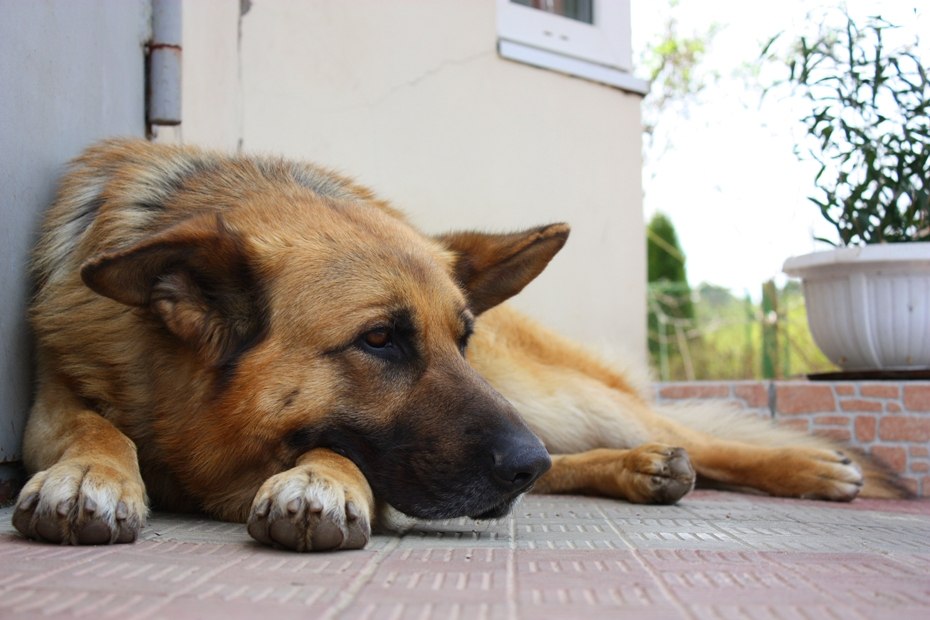Dogs that suffer above average from fear, panic, and stress are significantly restricted in their quality of life. Noise, thunderstorms, or New Year’s Eve fireworks make them panic and even endanger their lives. Sedatives for the dog can help in such extreme exceptional situations. But caution should also be exercised when using animal tranquilizers. You can find out all about tranquilizers for dogs in this article.
Which stressful situations put a strain on a dog?

As individual as each individual dog is, the situations that are stressful for it are also individual. Whether it’s driving a car, a kindergarten group approaching him, or the flashing, loud garbage truck that appears on the street every week. Or the visit to the vet, the rowdy dog next door, the thunder and lightning of a thunderstorm, or on New Year’s Eve the hissing, banging, lightning, and the unspeakable stench. There are countless situations that a dog can experience as stress. Unfortunately, it even happens that the owner does not even realize that the dog is in a stressful situation because the mobile phone is more important again.
How stressful or fear-resistant a four-legged friend is depending a lot on his socialization, his upbringing, his experiences, and also his character.
What can I give my dog to calm him down?
Demonstrably effective tranquilizers can only be prescribed by a veterinarian for highly panicked and anxious dogs.
When are tranquilizers advisable for the dog?

When people think about sedatives for dogs in connection with fear and stress, it is usually about the severe fear of noise or New Year’s Eve. Dogs experience panicky, uncontrollable anxiety during thunderstorms or on New Year’s Eve. Those who run away in panic or freeze completely, who only tremble, who pee, defecate under them, or vomit. We are talking about dogs that are so panicked that they are no longer responsive or retrievable. Who would jump out of the window or even attack people in their panic?
According to scientific behavioral medicine, such severe panic attacks and anxiety states that limit the quality of life should be treated pharmacologically, since experience has shown that untreated anxiety states continue to worsen. Also for animal welfare reasons, such a dog should be presented to a veterinarian to talk about sedatives.
What are the best tranquilizers?
Drugs containing the active substance benzodiazepine are anxiolytic and sedative. Steer clear of drugs with the active ingredient acepromazine, they only immobilize the dog. Acepromazine is neither anxiolytic nor calming!
Beware of certain sedatives!
But caution is also required in the market for animal tranquilizers. There are active ingredients such as acepromazine that immobilize the dog’s muscles, but they are still at the mercy of their fear and are now unable to even move. Unfortunately, there are still veterinarians who administer drugs with such active ingredients to dogs.
Proven anti-anxiety tranquilizers for dogs
In contrast to the active ingredient acepromazine, drugs with the active ingredient benzodiazepine are actually anxiolytic and sedative. The active ingredient is also used in human medicine. It is a synthetic drug that is usually administered as a tablet or capsule. Benzodiazepine-based tranquilizers need a lead time to take effect. The anxiolytic and calming effect lasts about five hours. If the dog has already panicked, benzodiazepine-based medications should under no circumstances be administered. Medically, a reverse reaction can then occur and the dog can become even more panicky and/or aggressive.
The administration of sedatives should always be discussed in detail with your trusted veterinarian.
How Does Valerian Affect Dogs?
Valerian, Schuessler salts, globules, and the like have no scientifically proven effect on anxious and panicked dogs.
Preparations and aids for dogs with “mild” fear of noise and New Year’s Eve

For most dogs, it is certainly true that although they have a lot of respect and are also afraid of thunderstorms and New Year’s Eve, they are still approachable and easy to handle. There are some preparations for these four-legged friends that are sold as so-called dietary supplements. These include, for example, ZylkenOk e and Adaptil tablets. But also aids such as pheromone vaporizers for the socket and pheromone collars can help these animals to be more relaxed.
For some dogs with a mild fear of noise and New Year’s Eve, so-called Thunder shirts have also proven their worth. An elastic bodysuit that fits snugly to the dog’s body and applies gentle pressure intended to calm the dog.
Another sedative can also be hearing protection. Mutt Muffs are a type of earmuffs for dogs that fit over the head and ears. Hunting and police dogs are also equipped with it. You can also try cotton wool or a scarf, which protects your hearing, for less money.
All of these aids can, of course, also be used for dogs in high panic, after consultation with the veterinarian.
Why is my dog so restless?
Fear, joy, and pain make dogs restless. If you can’t figure it out yourself, talk to your vet, physical therapist, or dog trainer.
Which home remedies are suitable for calming dogs?
The topic of alcohol is always hotly debated among dog owners, or to be more precise: Grandma’s famous eggnog. In tiny amounts, alcohol has been shown to have a calming and muscle-relaxing effect, even on dogs with mild noise anxiety. Most dogs actually like eggnog very much and lick it away like a rat. And if the beloved furry friend takes a small amount of 20% eggnog once a year, he won’t become an alcoholic either! For example, a 15kg, slightly anxious dog can be offered 15ml of eggnog twice on New Year’s Eve, at 9:30 p.m. and 11:30 p.m., in order to better cope with the hissing and banging at midnight.
Some dog owners swear by Bach flowers, valerian, globules, Schuessler salts, and the like. None of this has been scientifically proven. But surely the good feeling of the owner also has a calming effect on the dog. In the case of a severely panicked and anxious dog, however, these home remedies or the calming effect of mum or dad will have no effect.
Pros and cons of tranquilizers for dogs

Dogs that suffer from an above-average fear of noise and panic attacks and whose quality of life is significantly reduced as a result must be presented to the veterinarian so that a suitable sedative can be discussed. The risk of these dogs endangering, injuring, or even causing accidents to themselves or other dogs and people is simply too high. It is important that prescribed sedatives actually have an anxiolytic and calming effect, such as drugs based on the active ingredient benzodiazepine.
Sedatives containing the active ingredient acepromazine only immobilize the dog and do not relieve their anxiety or calm them down. Under this active ingredient, the dog continues to be at the mercy of its fear and panic. Acepromazine should not be given to the dog for animal welfare reasons!



























